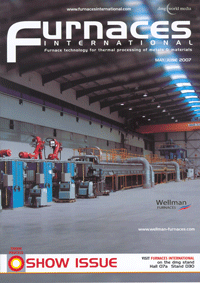High strength steels based on the 43XX series are commonly used for aircraft landing gear components because of their desirable mechanical properties. To achieve optimum mechanical properties, these alloys are usually heat treated by quenching in oil from the hardening temperature, then tempered. This produces a microstructure with high strength and excellent toughness, ideal for applications involving heavy loading and cyclic fatigue. During hardening, internal stresses created from the thermal shock of direct oil quenching almost always cause some degree of distortion in the heat treated component. A final machining allowance is often left on critical dimensional features to compensate for distortion. However, due to the difficulty of machining these alloys in the hardened condition, machining allowances must be minimized.
Many heat treaters have developed hot straightening techniques to reduce quench distortion. However, these techniques are very labour intensive and often involve expensive tooling. In the current environment of cost and lead-time reduction, reducing distortion during thermal processing has become a primary objective for heat treaters of landing gear components. Interrupted quenching techniques such as ausbay quenching offer good potential for reducing quench distortion. Shown in Figure 1 is an isothermal transformation (I-T) diagram for 300M (4340M) alloy, the most commonly used steel for ultra-high strength aircraft applications. The I-T diagram illustrates the microstructural transformations the steel undergoes over time at constant temperature. Superimposed on this diagram is a curve depicting the cooling rate required for successful ausbay quenching. BY JEFF PRITCHARD


